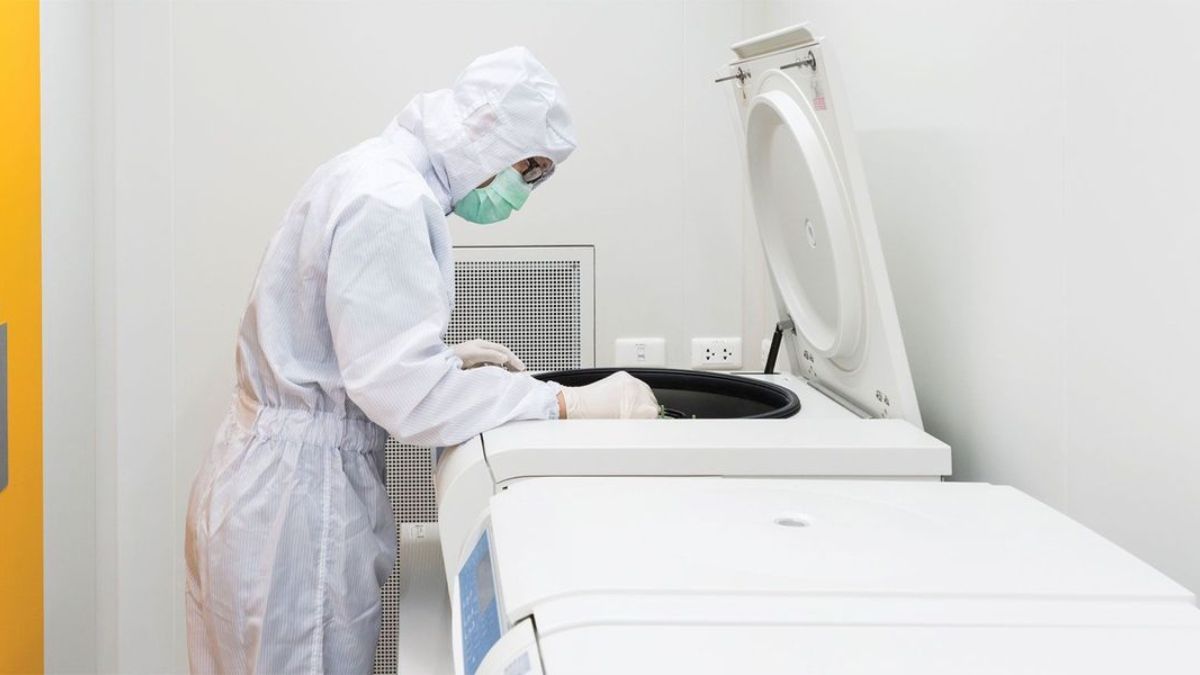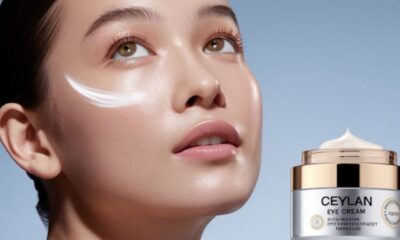TOPIC
Unveiling the Unusual: Exploring the World of Freaky Font

Fonts are everywhere, shaping our perception of text and design. Among the myriad styles available, there’s a unique category that stands out—freaky fonts. These unconventional typefaces push boundaries and challenge norms. They evoke emotions, spark curiosity, and often leave a lasting impression.
Imagine walking through a gallery where each piece has its own personality, narrating stories through quirky shapes and unexpected curves. That’s the magic of freaky fonts! Whether you’re designing for Halloween or want to make your brand memorable, these fonts can add an eccentric flair to any project.
Join us as we dive into the fascinating world of freaky fonts. Explore their history, discover various types, and learn how to incorporate them effectively in your designs. Let’s embark on this creative journey together!
The History and Evolution of Freaky Font
Freaky fonts have an intriguing history that reflects the evolution of design itself. Initially, typography was all about functionality and legibility. However, as art movements emerged—like Surrealism and Dadaism—designers began to experiment with unconventional letterforms.
The digital age brought a revolution in font creation. Designers now had access to graphic software that allowed for limitless creativity. This shift led to the birth of wild styles that challenged traditional norms.
With each decade, freaky fonts gained prominence in various subcultures. The punk scene embraced chaotic designs, while retro aesthetics revived vintage styles with a twist. Today, social media plays a significant role in showcasing these fonts, fueling their popularity among younger audiences.
As trends evolve rapidly online, freaky fonts continue to adapt and inspire fresh ideas across industries—from branding to web design. Their transformative journey highlights how typography can be both functional and expressive.
Types of Freaky Font
Freaky fonts come in various styles, each serving a unique purpose. One popular type is the horror font. These designs often feature jagged edges and drippy elements that evoke suspense or fear.
Another intriguing category is the whimsical font. With playful curves and bright colors, these fonts capture a sense of fun and imagination. They’re perfect for children’s books or creative projects aiming to spark joy.
Then there are grunge fonts, which carry an edgy, distressed look. Their rough appearances fit well with urban themes or alternative art pieces.
Don’t forget about decorative scripts! These cursive styles can be ornate, adding flair to invitations or branding materials.
Experimental fonts push boundaries with unconventional shapes and layouts. Embracing chaos can result in eye-catching visuals that demand attention from any audience.
How to Use Freaky Font in Design
Freaky fonts can transform your design projects from ordinary to extraordinary. They grab attention and evoke emotions—perfect for capturing the essence of your brand.
When using freaky fonts, start by considering your audience. Ensure that the style aligns with their preferences and expectations. A whimsical font may delight younger demographics but could confuse a more traditional crowd.
Pairing is crucial. Combine freaky fonts with simple, clean typefaces to maintain readability while adding flair. This balance ensures that your message remains clear amidst the quirkiness.
Use color wisely when incorporating these bold choices. Bright shades can enhance the playful vibe, while muted tones bring sophistication without losing character.
Remember context matters too. Use freaky fonts in headings or promotional materials where they won’t detract from essential information but rather highlight it creatively!
Examples of Effective Use of Freaky Font
Freaky fonts can transform a design from mundane to mesmerizing. Take horror movie posters, for instance. They often use jagged edges and distorted letters to evoke suspense and intrigue.
Another great example is in children’s books. Whimsical fonts with playful curves engage young readers’ imaginations. They invite children into fantastical worlds filled with adventure.
Online marketing also benefits from freaky fonts. Brands looking for edgy appeal might choose quirky typography for social media campaigns or promotional graphics, attracting attention instantly.
Even product packaging leverages unique lettering styles to stand out on crowded shelves. Think of craft beer labels that use artisanal-inspired typefaces—it’s about making a statement while appealing to niche markets.
Events like Halloween parties showcase freaky fonts beautifully in invitations and decorations, setting the mood before guests even arrive! It’s all about creativity and capturing an audience’s interest through striking visuals.
Tips for Choosing the Right Freaky Font
Choosing the right freaky font can transform your design from mundane to mesmerizing. Start by considering your audience. A playful font might appeal to children, while something more sinister could suit a horror-themed project.
Next, think about readability. Even the quirkiest fonts should convey your message clearly. Avoid overly intricate designs that may confuse viewers at first glance.
Also, consider the context of use. A freaky font for a Halloween party invitation will differ vastly from one used in an art gallery exhibit. Match the tone of your text with its visual representation.
Experimenting is crucial too! Test different styles and combinations until you find what resonates best with your vision. Don’t shy away from mixing fonts for added flair—just ensure they complement each other well.
Keep accessibility in mind; everyone should enjoy the creativity without struggle or confusion adding unnecessary barriers.
The Controversies Surrounding Freaky Fonts
Freaky fonts often spark debates within the design community. Some argue they detract from readability, especially in professional settings. When aesthetics override functionality, communication suffers.
Additionally, the cultural implications of certain freaky fonts can stir controversy. Fonts that mimic specific cultures or symbols may be seen as appropriation rather than appreciation. Designers must navigate these sensitivities carefully.
Another point of contention is their appropriateness for branding. While a quirky font might capture attention, it can also alienate potential customers if misused. Brands risk losing credibility by opting for styles that don’t align with their image.
Moreover, there’s a fine line between creativity and chaos in typography. Some critics argue that over-the-top designs distract rather than engage an audience effectively. Balancing uniqueness with clarity remains a challenge for many creatives navigating this vibrant landscape.
Conclusion: Embracing the Unique and Creative with Freaky Fonts
Freaky fonts are more than just quirky text styles; they represent a bold choice for designers and creatives alike. They can evoke emotions, capture attention, and convey messages in ways that standard typefaces simply cannot. Whether it’s the playful swirls of a horror-themed font or the sharp edges of an avant-garde design, freaky fonts breathe life into projects.
Embracing these unique creations allows artists to push boundaries and explore new realms of creativity. The key lies in finding the right balance between aesthetic appeal and readability. Choosing the perfect freaky font can transform ordinary designs into extraordinary experiences.
As you navigate this fascinating world, remember that every project has its own personality. Let your choice reflect not only your vision but also resonate with your audience’s expectations. So go ahead—experiment with freaky fonts! They might just be what you need to stand out from the crowd while showcasing your artistic flair.
TOPIC
The Power of Prevention: A Holistic Approach to Pest Management

Understanding Different Pest Control Methods
Achieving a pest-free home is vital for both hygiene and peace of mind. Understanding the various methods available when considering pest control solutions can significantly influence the results. Natural pest control methods include biological pest control, which introduces natural predators to the environment to reduce the pest population, and mechanical pest control, such as traps and barriers, which physically intercept pests. These methods are favored for their minimal environmental impact and safety around pets and children.
Conversely, chemical control methods involve pesticides and insecticides that can immediately relieve pest infestations. However, it’s essential to use these products judiciously, following manufacturer guidelines closely to prevent harm to non-target species, your family, or beneficial insects that contribute to your garden’s health. For those seeking a more thorough approach, considering a permanent pest control solution Houston TX can be an effective strategy, offering customized plans to sustain a pest-free environment in alignment with regional challenges.
Proactive Steps to Prevent Pest Infestations
Prevention should always be the first line of defense against pests. Outfitting your home with pest prevention measures involves routine activities and vigilant maintenance. Regular sweeping and vacuuming help remove food particles and potential nesting materials that attract pests. Sealing cracks and crevices with caulk is essential to block uninvited guests from sneaking inside.
Another simple yet impactful step is to ensure rubbish bins are tightly sealed and emptied regularly, while composts should be managed far from the home’s perimeter to minimize pest attraction. Limiting water sources by fixing leaky pipes and avoiding overwatering plants can deter pests like mosquitoes and cockroaches, which thrive in moist conditions. By instilling these everyday practices, homeowners can significantly prevent common pests and reduce the need for drastic measures later.
Expert-Recommended Practices for Lasting Results
Integrating professional advice into your pest management strategy can lead to long-lasting results. Integrated Pest Management (IPM) is a holistic approach that combines various pest control techniques and is tailor-fitted to identified pest issues. This strategy relies on a deep understanding of pest life cycles and their interactions with the environment, which specialists can provide because of their extensive study and practical expertise.
According to data from the Environmental Protection Agency, IPM is effective because it combines sanitation, habitat alteration, and targeted use of pest control products only where necessary. By leveraging expert advice through IPM, you can achieve a healthier home environment that deters pests effectively without over-reliance on chemical treatments.
Fostering a Healthy Ecosystem Around Your Home
Encouraging a balanced ecosystem around your home can be a powerful, natural pest deterrent. Practices such as planting native flora attract beneficial insects and birds that prey on pest species. Creating a supportive habitat for these creatures empowers nature’s pest controllers to thrive and contribute to a naturally balanced garden or yard.
Birds and predator insects, such as ladybugs and lacewings, can substantially minimize pest populations without chemical measures. Additionally, maintaining diverse plant life can discourage monocultures that pests target. Native plants often host fewer pests and withstand local climate conditions better, sustaining their growth with minimal human intervention.
TOPIC
Comprehensive Guide to Cleanroom Certification and Testing

Cleanroom certification and testing ensure controlled environments meet stringent air quality, particle count, and safety standards. The process includes airflow analysis, HEPA filter integrity tests, and environmental monitoring. Regular certification complies with industry regulations, ensuring optimal conditions for sensitive pharmaceuticals, electronics, and biotechnology processes.
What Is Cleanroom Certification?
Cleanroom certification is a rigorous process that ensures controlled environments, or cleanrooms, meet strict standards and regulations for air quality, particle count, and other environmental conditions crucial for industries like pharmaceuticals, electronics, and biotechnology.
Achieving cleanroom certification CA guarantees that facilities operate within internationally recognized standards, which is crucial in minimizing risks associated with contamination. The process involves extensive testing and evaluation to ensure the cleanroom environment meets these standards. This certification is essential for preserving the integrity and caliber of goods produced in these settings and guaranteeing that they are free of impurities that might jeopardize their usability or safety.
The Importance of Cleanroom Certification
Cleanroom certification ensures product quality, regulatory compliance, and personnel health and safety. It reduces contamination, especially in sensitive industries like pharmaceuticals and biotechnology. The CDC guidelines emphasize the importance of maintaining a sterile environment for patient safety in healthcare settings. Regular audits and certifications ensure facilities are regularly reviewed and updated to meet standards. This not only maintains product integrity but also enhances operational efficiency. The process maintains product integrity and elevates an organization’s reputation as a reliable and quality-conscious entity.
Standard Tests in Cleanroom Certification
Airborne Particle Counts and HEPA Filter Integrity Testing are crucial for maintaining cleanroom cleanliness. Airborne Particle Counts measure the number and size of particles in the air, ensuring the cleanroom meets the required cleanliness level. HEPA Filter Integrity Testing verifies the functioning of HEPA filters, ensuring they effectively remove contaminants. Airflow and Segregation Tests ensure airflow patterns are designed to prevent cross-contamination. Pressure Differential Monitoring maintains the correct pressure differential between cleanroom zones, preventing contamination inflow from less clean areas. Temperature and Humidity Control tests ensure the cleanroom’s environmental conditions are within specified ranges, ensuring product quality and personnel comfort. Regularly performing these tests helps maintain the cleanroom’s integrity and compliance with relevant standards.
Steps to Obtain Cleanroom Certification
Obtaining cleanroom certification involves a thorough review of existing conditions, preparation of necessary documentation and standard operating procedures (SOPs), testing, review, and audit by an independent auditor, and certification by an accredited body. The initial assessment phase identifies gaps and areas for improvement, while the documentation phase outlines protocols for maintaining the cleanroom environment in line with industry standards. Regular audits and reviews help address gaps, ensuring continuous improvement and compliance. The certification phase confirms that the cleanroom adheres to all necessary standards, providing confidence to the facility and its clients. This comprehensive approach ensures the cleanroom meets all the required standards and effectively performs under regulated conditions.
Best Practices in Maintaining Cleanrooms
Maintaining a certified cleanroom requires strict protocols, including regular cleaning schedules, proper gowning, routine equipment checks, and continuous monitoring of environmental conditions. These practices ensure the removal of contaminants, minimize contamination introduction, and ensure critical systems like air filtration are correctly functioning. Staying updated with CDC guidelines helps maintain sterility and reduce contamination risks. Fostering a disciplined culture among personnel is crucial, and regular training on cleanroom protocols is essential. Routine inspections and surprise audits encourage strict adherence to procedures, ensuring cleanrooms operate at high levels of cleanliness and efficiency.
Frequently Asked Questions
Here are some common questions about cleanroom certification and testing:
- Q: How often should cleanroom certification be renewed?
- A: Typically, cleanroom certification must be renewed annually or as regulatory bodies specify. Regular renewal ensures that the cleanroom continues to meet evolving standards and remains in compliance with industry regulations.
- Q: What industries require cleanroom certification?
- A: Industries such as pharmaceuticals, healthcare, electronics manufacturing, and biotechnology commonly require cleanroom certification due to the high sensitivity and precision required in their operations.
- Q: Can cleanroom standards vary by region?
- A: Yes, cleanroom standards can vary by country and industry regulations. Organizations must stay informed about regional standards and ensure their cleanrooms adhere to local and international laws.
Expert Tips for Cleanroom Management
Experts suggest that maintaining optimal cleanroom performance involves the following:
- Continuous staff training.
- We are using advanced monitoring systems to track environmental parameters.
- We are establishing a robust preventative maintenance schedule.
Engaging third-party auditors can provide valuable insights and recommendations for improvement, identifying areas that may have been overlooked internally. These audits can help organizations achieve higher certification and operational excellence levels, ensuring their cleanrooms remain efficient and compliant. By following these expert tips, organizations can achieve higher certification and operational excellence levels, ensuring their cleanrooms stay efficient and compliant.
Final Thoughts
Cleanroom certification is crucial for maintaining high standards in various industries. It entails thorough testing and assessment to ensure cleanrooms fulfill the requirements and improve product quality and safety. Resources like the CDC Guidelines on Environmental Infection Control offer valuable insights into maintaining sterile and controlled environments, ensuring the safety and quality of cleanroom environments.
TOPIC
Ensuring Safety on the Job Site: Essential Guidelines for Heavy Equipment Operators

Introduction to Job Site Safety
Job site safety is paramount in the construction industry. In addition to protecting workers, maintaining a secure workplace encourages effectiveness and productivity. One key aspect of job site safety is the appropriate use of alturnamats to prevent accidents and provide stability for heavy machinery. Handling heavy equipment demands more than just skill; it requires a reliable safety foundation.
The National Safety Council states that the construction sector is responsible for a significant number of workplace injuries, leading to thousands of incidents annually. Investing in quality equipment mats, such as alturnamats, can significantly reduce these incidents, providing a safer environment for all personnel.
Choosing the Right Equipment Mats
Selecting the suitable equipment mats is crucial for maintaining a safe work environment. A few things to think about are the weight of the equipment, ground conditions, and the type of material the mats are made of. Each of these elements plays a role in ensuring stability and safety.
Weight Capacity
Different mats have varying weight capacities. It’s essential to identify mats that can support the weight of the heavy machinery being used. Overloading a mat can result in breakage or shifting, leading to accidents. For instance, a mat that can support up to 50 tons may be required for large cranes, while lighter machinery, such as forklifts, may require mats with lower weight capacities. Ensuring compatibility between equipment and mats is crucial to avoid unexpected mishaps.
Ground Conditions
Consider the type of terrain where the mats will be used. For example, muddy or sandy areas might require mats with better traction and drainage capabilities. Mats designed for rough terrains provide enhanced grip and prevent machinery from sinking. Selecting the appropriate mat for specific ground conditions ensures that the equipment remains stable and operational, even in challenging environments.
Material Type
Materials such as high-density polyethylene (HDPE) are preferred for their durability and resistance to chemicals and extreme weather. Choosing the suitable material ensures longevity and effectiveness in diverse conditions. HDPE mats are known for their flexibility and sturdiness, making them ideal for various industrial applications. Additionally, some mats incorporate additives to enhance their resistance to ultraviolet (UV) rays, further extending their lifespan in outdoor settings.
Securing Mats
Secure mats with appropriate fastening tools. Depending on the mat design, this might include using stakes or specialized connectors. Securing methods help maintain the mats’ position, preventing them from shifting under the weight of heavy equipment. Consistent monitoring ensures that the mats remain anchored adequately throughout the project.
Ensuring Employee Safety
Employees should be trained on the proper use and maintenance of equipment mats. Comprehensive training programs can include demonstrations of correct installation techniques and information on recognizing potential hazards. Safety drills and continuous education keep employees vigilant and prepared.
Safety Drills
Periodic safety drills help reinforce the importance of proper mat usage and prepare employees for emergencies. Regular drills foster a culture of safety and readiness, enabling workers to respond effectively to potential hazards.
Adapting to Weather Conditions
Weather conditions can significantly impact equipment mat efficacy. In rainy or icy conditions, mats might become slippery, requiring additional precautions. Using mats with textured surfaces can help improve traction. Always consider the weather forecast when planning job site activities.
-

 TOPIC3 months ago
TOPIC3 months agoExploring Fappelo: The Rise of a Unique Online Community
-

 TECHNOLOGY3 months ago
TECHNOLOGY3 months agoExploring the Impact of Shannon Swanick TPO on Modern Blogging
-

 CRYPTO4 months ago
CRYPTO4 months agoUnderstanding the Landscape of Crypto30x.com regulation: What You Need to Know
-

 CRYPTO4 months ago
CRYPTO4 months agoExploring the Benefits of Using Biitland.com Stablecoins
-

 BEAUTY4 months ago
BEAUTY4 months agoCeylan Eye Cream Reviews: Transforming Tired Eyes or Just Hype?
-

 HEALTH2 months ago
HEALTH2 months agoTop 5 Benefits of Using a Mansrufer for Your Daily Routine
-

 TOPIC3 months ago
TOPIC3 months agoTop 5 Myths About Hypackel Debunked!
-

 TOPIC2 months ago
TOPIC2 months agoThe Art of Expression: Analyzing Puppygirlxd Most Iconic Creations
